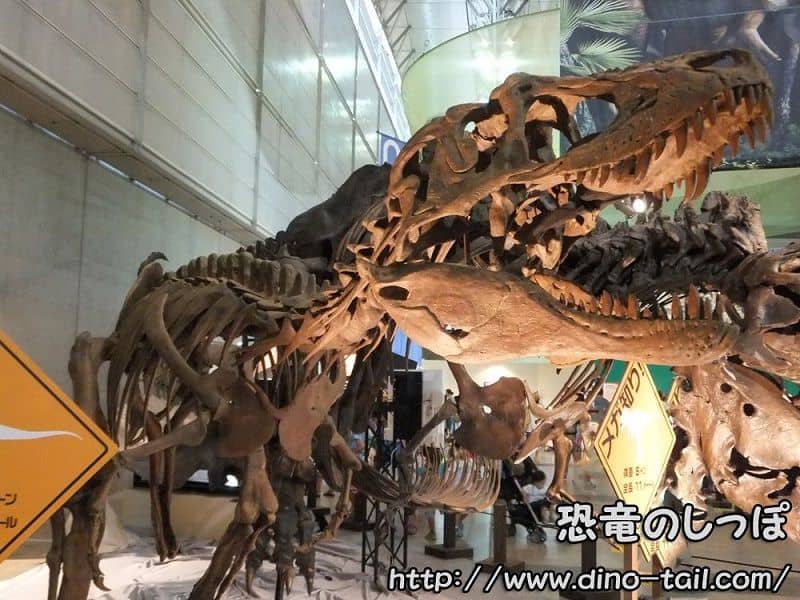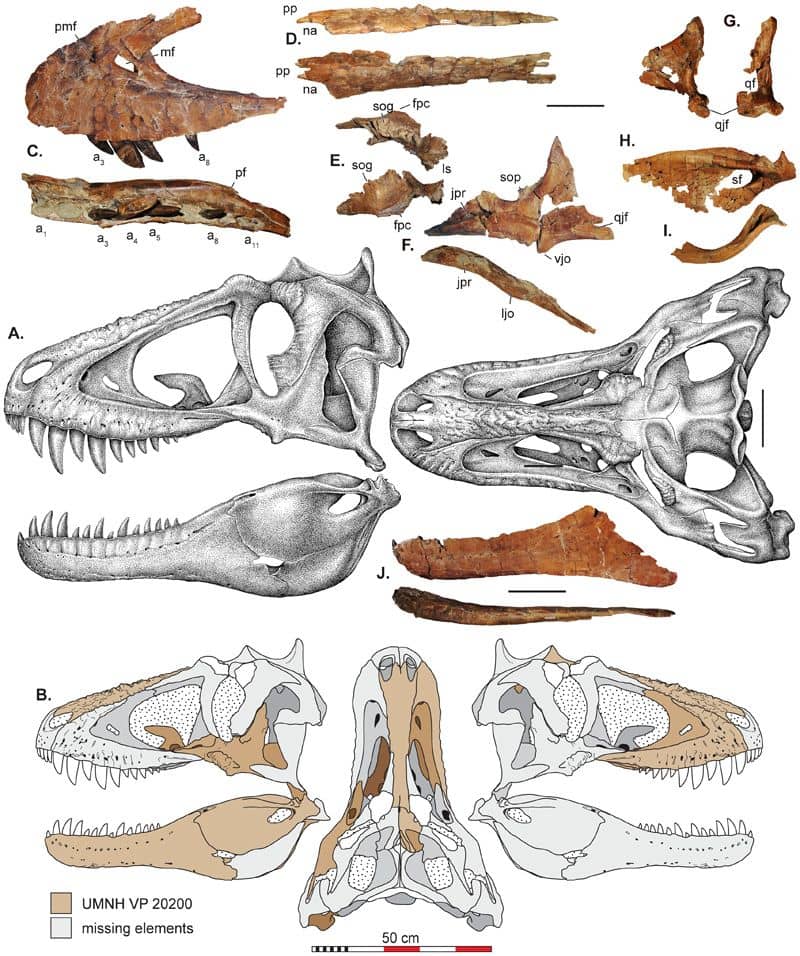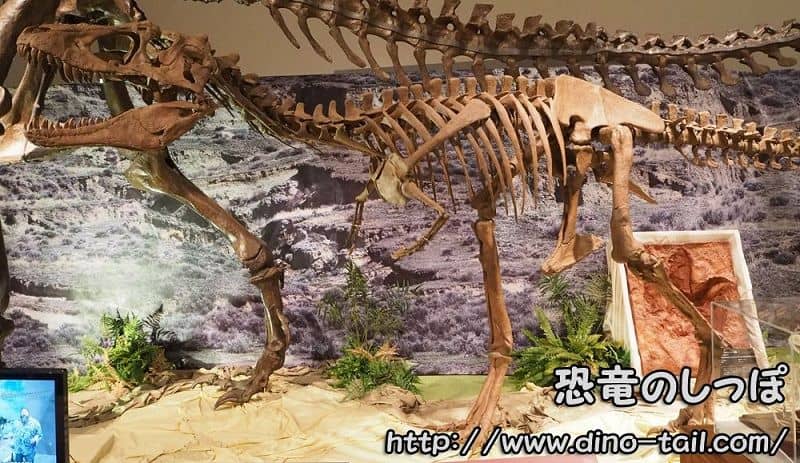About Lythronax
| Scientific Name (Genus) | Lythronax |
| Meaning of Name |
Gore king
lythron (gore) [Greek] - anax (king) [Greek] |
| Classification | Saurischia, Theropoda (Tetanurae) |
| Total Length | Approx. 8m |
| Diet | Carnivorous |
| Period | Late Cretaceous |
| Species |
Lythronax argestes
*The species name argestes comes from the Greek poet Homer's word for the 'southwest wind,' as the fossil was found in the southwestern United States. |
| Year of Paper Publication | 2013 |
| Genus Name Publication |
Tyrant Dinosaur Evolution Tracks the Rise and Fall of Late Cretaceous Oceans.
PLoS ONE. 8. by Mark A. Loewen.; Randall B. Irmis.; Joseph J. W. Sertich.; Philip J. Currie.; Scott D. Sampson. 2013. |
Features
Lythronax was a tyrannosaurid that lived in North America during the Late Cretaceous period (about 80 million years ago). It is estimated to have been about 8 meters long and weighed about 2500 kg.

The biggest difference from Tyrannosaurus rex is its size, but its skull shows surprisingly similar features. In particular, its short snout and wide field of vision, which allowed for binocular vision to accurately judge distances to prey, were considered hallmarks of Tyrannosaurus rex.
The discovery of Lythronax showed that these 'royal qualities' were already established more than 10 million years before Tyrannosaurus rex appeared. This is a very important discovery that has significantly rewritten the evolutionary timeline of the Tyrannosauridae family.
The scientific name means 'gore king'.

The 'King' of the Lost Continent of Laramidia
During the Late Cretaceous, when Lythronax lived, the North American continent was divided east-west by a shallow sea, with the western part forming an island continent called 'Laramidia.' Lythronax was the apex predator that reigned over the southern part of this continent.
Interestingly, research on Lythronax has revealed that different lineages of tyrannosaurids evolved independently in the northern (present-day Alberta, Canada, etc.) and southern (present-day Utah, USA, etc.) parts of Laramidia. The division of the continent by the sea led to the 'endemism' of dinosaurs in each region.
The discovery of Lythronax has provided important evidence that the evolution of tyrannosaurids was much more complex than previously thought and was closely linked to the formation of the continents.
Discovery and Description

Fossil group cataloged under specimen number UMNH VP 20200
Source: Tyrant Dinosaur Evolution Tracks the Rise and Fall of Late Cretaceous Oceans.
PLoS ONE. 8.
by Mark A. Loewen.; Randall B. Irmis.; Joseph J. W. Sertich.; Philip J. Currie.; Scott D. Sampson. 2013.
In 2009, fossils including a right maxilla, both nasal bones, a right frontal, and a left jugal were excavated from the Wahweap Formation in the Grand Staircase-Escalante National Monument in southern Utah, USA. Radiometric dating estimates that the formation was deposited between 80.75 and 79.6 million years ago.
In 2013, Mark A. Loewen, Philip J. Currie, and others described the new genus and species Lythronax argestes, belonging to the Tyrannosauridae family.
While the genus Lythronax itself is considered endemic to North America, its close relationship with Tyrannosaurus rex and the Asian Tarbosaurus suggests that the Tyrannosauridae family was highly successful on both the Asian and North American continents.
Lythronax Stamp & Fossil Gallery


